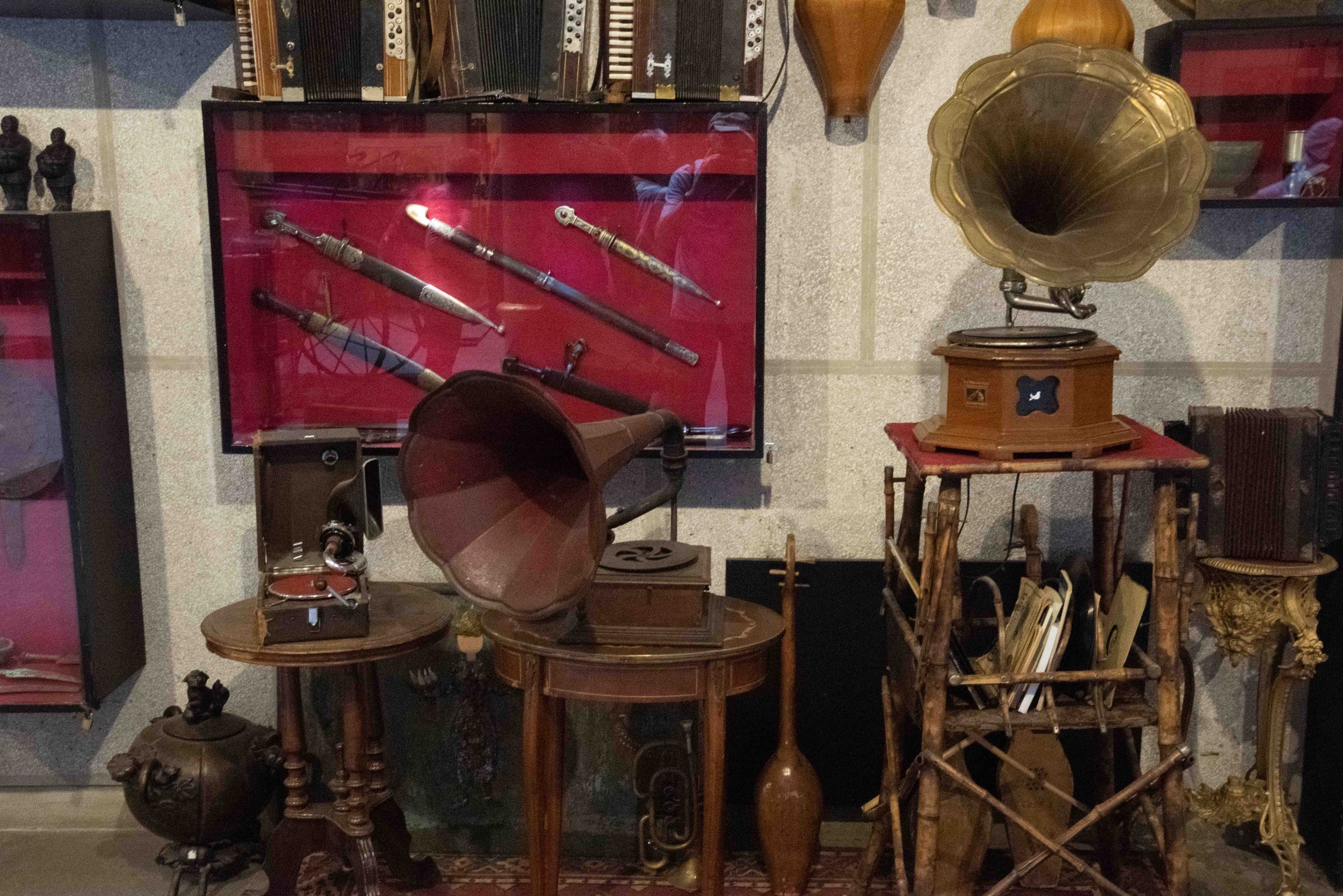After breakfast we contacted Max in NZ and then checked out of our hotel which had the biggest rooms imaginable for a hotel although they were sparse in facilities.
The morning was spent driving mostly southwards to Tbilisi.
On one steeper section of the road we were held up for some time due to a bus crash that had occurred further up the highway. There were six or more police cars and ambulances in attendance and we think another bus may have been involved too. Hopefully there were only minor injuries but the incident looked very serious.
After another hour’s travel we stopped at the village of Badiauri to sample the traditonal Georgian shoti bread specialty. The bread flour is made from a selected strain of local wheat and the bread is cooked in a tandoori oven fuelled by firewood that produces red hot coals. The elongated loaves cost 2 Lari (approx $1) and were eaten hot directly from the oven. Gouda cheese which is another local product was added to the bread to create a delicious mid-morning meal.
Bakery, Badiauri village
Baking bread, Badiauri village
We arrived in Tbilisi at around 13:00 and commenced an afternoon of site seeing in the old and touristy part of the Georgian Capital city.
The bus dropped us off at the steps leading to the Tsminda Sameva Cathedral. We climbed many steps up to this imposing structure which is the preeminent symbol of Georgian Orthodox religion in Tbilisi. It towers over the hillside and it was consecrated in 2004. The cathedral is a massive and lavish expression of Georgian architecture with concrete, granite, marble and gold used extensively. The 84m high cathedral is topped with a gold covered cross above a 12 sided golden central dome. The church incorporates three level of churches with the top one being the sparingly decorated cathedral with relatively few icons.
Tsminda Sameba Cathedral
The nearby Bell Tower, which despite being smaller than the cathedral, was equally impressive as it housed two massive bells amongst others in a geometrically appealing structure.
Bell Tower, Tsminda Sameba Cathedral, Tbilisi
A drink of the local lemonade was next on the agenda and there was a choice of eight fruit flavoured carbonated drinks. These thirst quenchers proved most popular as the heat of the day was taking its toll.
Lagidze Water (lemonade)
Jak & Corinne drinking Lagidze Water (lemonade)
We then climbed up to the landmark Metekhi Church that is perched on the edge of a nearly vertical rock wall overlooking the Mtkvari River below. Nearby is the imposing 1960s equestrian statue of King Vakhtang Gorgasali who built his palace and first church at this site and declared Tbilisi the capital in the 5th century.
Metekhi Church, Tbilisi
Statue of King Vakhtang Gorgasali, Tbilisi
On descending to near river level we boarded a cable car that took us from the old town high across the Mtkvari River and up to the Nrikala Fortress from which we were able to gain panoramic views across this impressive city. The fortress includes the St. Nicholas Church which had been rebuilt after it was totally destroyed by an unintended explosion of dynamite that was stored in the church during Soviet times.
Diana, Corinne & Jak on cable car, Tbilisi
View from Nrikala Fortress, Tbilisi
View from Nrikala Fortress, Tbilisi
Nrikala Fortress, Tbilisi
Our journey then followed a pathway back down towards the famous bath-houses and the nearby mosque. The small river has a waterfall that brings water from the high plateau above. The water has a sulfur smell and was the source of the bath water that supposedly had various medical and therapeutic benefits.
View of bath houses from Nrikala Fortress, Tbilisi
Bath houses, Tbilisi
Having now arrived in the dense touristy area we decided to take time and divert through the Meidan Bazaar which is in an underground tunnel of length about 100m. The tunnel is filled with items from both the old and modern world serving as both an ‘historical shopping’ area and a museum.
Meidan Bazaar Tbilisi
A further shopping centre was then visited and this one took the form of a modern day caravanserai. Amongst the artefacts on display were a number of old gramophone players as in the HMV logo.
Modern day caravanserai, Tbilisi
Old gramophones in modern day caravanserai, Tbilisi
We had a brief look inside the Sioni Cathedral and listened to a woman chanting prayers at very high speed but we’d decided at this point we’d had enough ecclesiastical encounters for one day and headed for a nearby cafe for drinks.
Inside Sioni Cathedral, Tbilisi
The homeward trip took us along Shardeni Street past a prominent theatre, a carpet market/museum and a shop specialising in highly decorative and expensive enamelled jewellery. We passed the famous Old Clock Tower and then crossed the covered Peace Bridge before returning to find our bus waiting a few hundred metres up the road.
Natia, Sinclair & Jak on Peace Bridge
Old Clock Tower, Shardeni Street, Tbilisi
Our driver then dropped us off at our Citrus Hotel which is clean and comfortable.
We had dinner at a local restaurant recommended to Janet by a Georgian friend. The traffic was appalling and it was a battle getting to the restaurant.
Our group at a local restaurant, Tbilisi
We had a delectable meal and caught an Uber home. His car accommodated all six of us and the 20 minute ride cost about $5.
It’s been an exhausting day as there’s so much to see in Tbilisi; we’ll spend more time exploring this Georgian gem tomorrow.





















